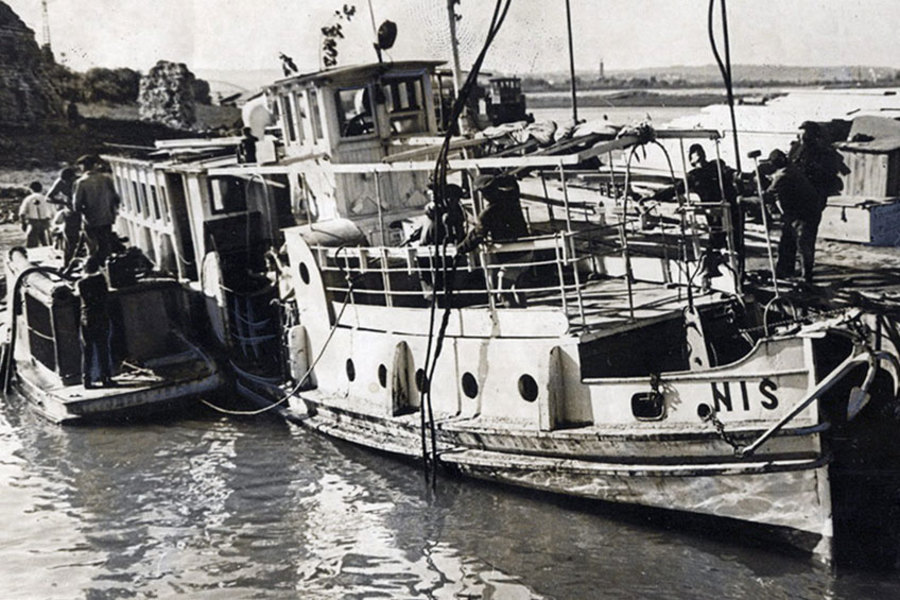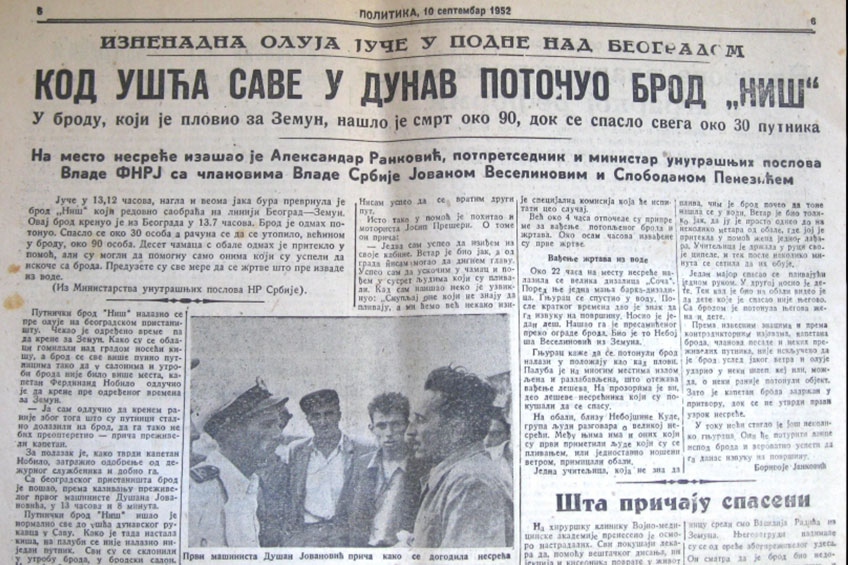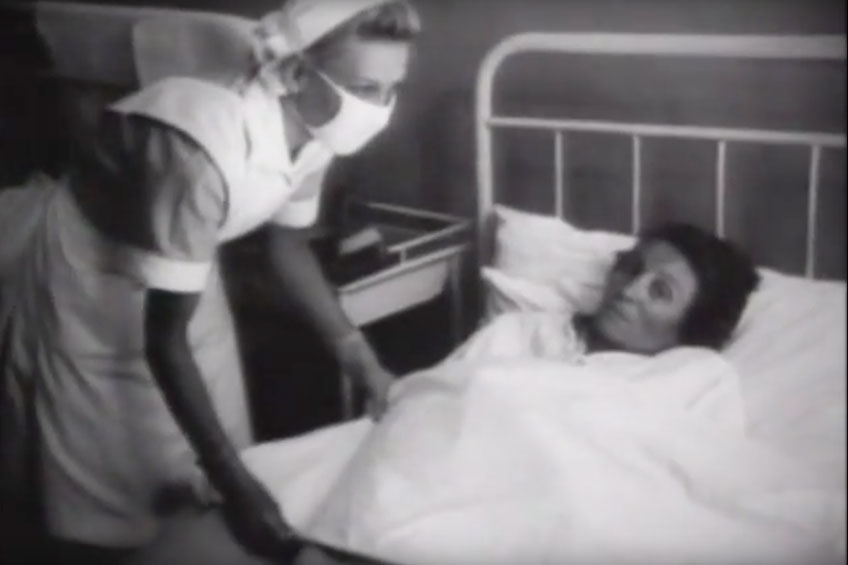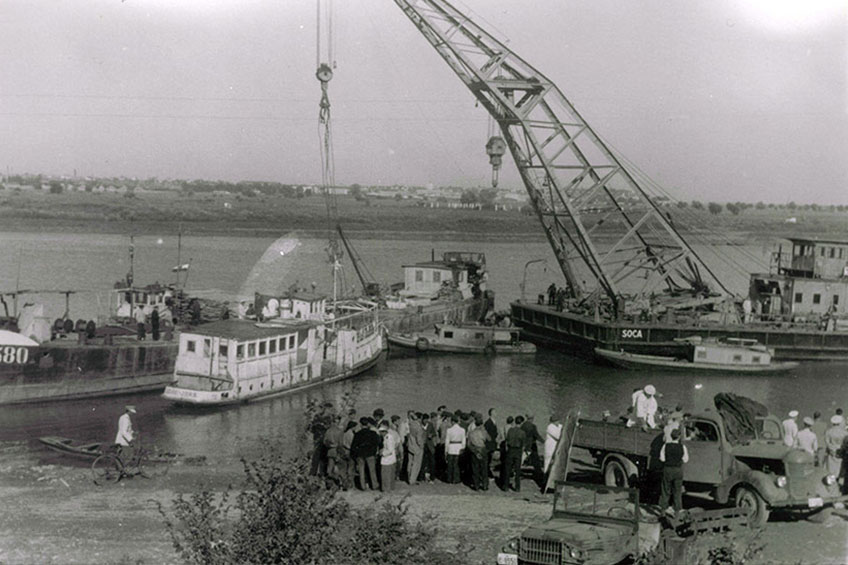
Photo: Muzej nauke i tehnike
Belgrade Titanic: the day when the capitol was painted black
An idyllic September day was suddenly filled with screams when a sudden bout of storm caught the ship “Nis” on the line Belgrade-Zemun. The ship bearing 150 passengers was pelted by rain and hail while a strong wind picked up and began tearing out trees, knocking them into the river. In only three minutes, “Nis” sank, taking with it the lives of over 100 people.
It was one of the greatest tragedies of Yugoslavian river sailing ever witnessed by our capitol. Reports from that time stated that there were at least 126 casualties, although the true number was never established. Officially 106 tickets were sold, but the number of passengers was even higher, despite the fact that Nis was designed for 60 people. The 30 passengers who managed to survive did so due to sheer luck.
Trapped under deck
At that time construction was being done on Sava bridge and the traffic between two coasts was done across the floating bridge that was set up and removed every two hours so that the ships can pass towards the confluence but also for the sake of the small boats that ferried from one bank to the other.
However, on that September 9th the floating bridge wasn’t set up so more people used ferries. The captain of “Nis”, Ferdinand Nobilo saw that a storm was coming. He asked for permission from the officials of Belgrade captainship to depart for Zemun ahead of schedule.
- “I decided to leave earlier because the passengers kept coming on board, to avoid overloading it” Nobilo stated after the disaster (Politika, 10th of September 1952).
According to the police report, “Nis” departed from Belgrade at 1:07PM. It reached the confluence as planned, before it got caught up in strong rain and egg-sized hail with strong wind gusts of over 100km/h. Realizing the severity of the situation, captain Nobilo ordered the s boat be steered towards the wind and closer to the shore.
 Photo: Youtube screenshot
Photo: Youtube screenshot
It was to no avail. Under a strong gust of wind, at precisely 1:12PM, the ship toppled over and very quickly sank 14m below the surface.
To make matters worse, most of the passengers hid away from the weather in the ship’s salon under the deck, where they were trapped. Surviving passengers stated that the ship captain and the machinist Dusan Jovanovic, pulled out passengers and tore out boards which they tossed to people who were already in the water.
- “You could see nothing at all, Danube was covered in mist...I could barely see the shape of the ship through hail and rain. Suddenly, the ship siren began intermitted and fast-paced signaling for help. The siren suddenly stopped, the ship was still on the surface but it was already sinking. Desperate screams could be heard from the river, rain and hail continued without mercy. The water was black with human heads, there were about sixty of them...” wrote “Politika” on 12th of September 1952, reporting the testimony of Svetislav Marjanovic who was fishing on the coast of Sava under Kula Nebojsa and witnessed the tragedy.
Through fog and hail, fighting the strong winds, sailors and fishermen immediately came to aid the unfortunate people with around ten boats. They pulled people out of the restless water, but sadly many victims didn’t get help in time. Along the coast near Nebojsa tower, the drowning people were thrown rope and floats in order to pull them out of the water, but lacking the strength to hold on, many drowned just short of salvation.
Newspapers “Politika” and “Borba” wrote about the horrifying events on land. A man dressed in a pilot’s uniform swam out of the river carrying a child in his arms. He thought he was rescuing his child, but it turned out his wife and son had drowned. He didn’t realize it until he came out of the water. A girl who managed to swim out of the water suddenly died at the shore. Screams of those realizing their loved ones remained captured on the ship filled the air. Ana Bajzert, a worker from Sutjeska textile factory, who couldn’t swim at all, was miraculously washed out into the shore, but her twelve years old daughter drowned.
A record-breaking storm
The storm that hit Belgrade on 9th of September 1952 entered the annals of meteorology. Pluviogram (a diagram of rainfall intensity) at the time when Nis was sinking showed up to 80mm of rainfall in 20min, which is 4mm per minute. That kind of intensity in rainfall is rare even in duration of one to two minutes, especially if the middle value is for 20mins.
Three days of mourning
A crew of doctors from the VMA arrived to the scene of the tragedy and immediately began providing aid. Already at 3PM the minister of police Aleksandar Rankovic as well as government officials Jovan Veselinov and Slobodan Penezic Krcun.
According to an article in “Borba” from 11th of September 1952, the first diver who entered the cabin of sunk ship, Bogoljub Peric, found a horrific sight. A drowned sailor was holding onto the ship’s steer with 55 lifeless bodies surrounding him, seven of which were children.
The divers spent an entire night pulling out drowned passengers while the “Soca” ship lifter started elevating the sunken vessel. After much difficulties and without significant damage to its structure, “Nis” re-emerged at around 4AM that night, while the last victim wasn’t recovered from it until 7:30AM.
Government FNRJ declared three days of national mourning while the National insurance company issued a statement saying that all the passengers were insured and that a sum of 50,000 dinars would be paid to the family of every victim. The government also promised to help children who lost their parents and families that lost their providers.
 Photo: Youtube screenshot
Photo: Youtube screenshot
Force majeure was to blame
To get to the bottom of the tragedy, a special investigation was formed. Due to contradicting statements of the surviving passengers and the crew members, captain Nobilo was briefly detained, but was soon released.
Eventually the investigation concluded that force majeure was to blame for the accident and nobody was held legally responsible.
Still, the investigation committee never answered one question. Namely, shortly before the tragic accident, “Nis” had its steam engine replaced with a significantly lighter diesel engine. This greatly reduced the weight on the bottom of the ship where most of the passengers were located, so the wind much more easily toppled it to the side.
 Photo: A museum of science and techniology
Photo: A museum of science and techniology
The importance of this matter is indicated by the case of a ship called “Kovin” that was submerged back in 1922. When this ship’s steam engine was replaced with a diesel one, a stabilizer was also installed to ensure more stability and safety for the vessel.
Later, there were also stories about an incredible set of circumstances that really led to this tragedy. In addition to the storm and the overloading of the vessel, as well as reports of balance offset due to a significantly lighter diesel engine, the accident was also partly caused by a whirlpool caused by the deepening of the river bed near War Island.
Further fate of Belgrade’s Titanic
There are two different versions on what happened to “Nis” afterward. What is known for certain is that after it was repaired, the ship was given a new name “Senta” and continued to sail on a regular line Smederevo-Kovin, all the way up to 1956. Reportedly, by the end of the 70’s it was cut up into pieces in Pancevo “Brodo-remont”.
However, there are still those who believe that “Nis” ended up painted in black, mounted with floats and that it still sails between Novi Sad’s “Strand” to Sremska Kamenica.




 5 ℃
5 ℃




